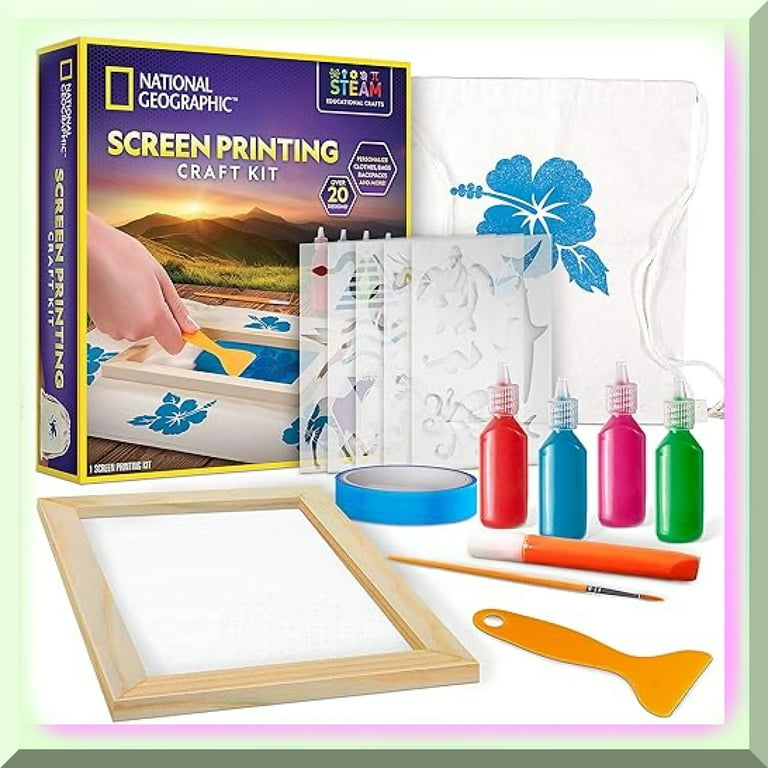High-Volume T-Shirt Printing for Schools and Organizations
Wiki Article
Grasping Silk Screen Printing: Tips and Techniques for Creating Stunning Designs
If you're looking to understand silk screen printing, you'll require greater than just excitement. It requires a solid understanding of strategies, the right tools, and careful prep work. You'll find exactly how to prepare your art work and tackle common issues that can occur throughout the procedure. By the end, you'll be ready to create magnificent designs that reflect your distinct design. However initially, let's check out the important fundamentals that prepared for your success.Recognizing the Essentials of Silk Screen Printing
Silk screen printing, commonly called display printing, is a flexible method for transferring designs onto different materials. You'll locate it's suitable for printing on fabrics, paper, plastic, and a lot more. The process includes creating a pattern, or screen, that permits ink to go through only in specific locations, producing clean and dynamic layouts.To obtain started, you'll need to prepare your artwork, ensuring it's in a suitable style. screen printing kit. You'll coat your display with a light-sensitive emulsion and expose it to light as soon as you've got your layout all set. This action produces a pattern of your design on the display
After cleaning out the unexposed emulsion, you're readied to print. Straighten your screen over your product, apply ink, and use a squeegee to push the ink via the screen. It's all concerning practice and perseverance, so do not wait to experiment and fine-tune your technique as you go.
Vital Tools and Materials You'll Require
To start with silk display printing, you'll require a few fundamental materials like screens, mops, and ink. As soon as you fit, you can check out sophisticated equipment that improves your printing top quality and efficiency. Allow's go over what you'll require to guarantee your tasks achieve success from the begin.Fundamental Silk Screen Products
Beginning on a silk screen printing task needs a few necessary tools and products to assure your success. You'll require a silk screen framework, which holds the mesh that moves your design. A squeegee is vital for pushing ink via the display onto your substrate. Do not forget the ink itself; pick colors that fit your layout and the product you're publishing on. A light source is important for exposing your screen, along with emulsion to produce your pattern. You'll also need an appropriate workspace, ideally one that's totally free and well-lit from dirt. Ultimately, supply up on cleansing products to keep your devices and maintain your displays in good condition. With these basics, you prepare to plunge into your project!Advanced Printing Equipment
When you prepare to take your silk display printing to the next degree, investing in innovative printing devices can make a significant distinction. A high-grade display printing press is important; try to find a multi-color press that permits for accurate registration and quicker manufacturing. You'll likewise wish to upgrade to an extra effective direct exposure system to ensure your designs are vibrant and sharp.Take into consideration investing in a dependable warmth source, like a conveyor clothes dryer, for also treating of inks. Do not ignore specialized inks; water-based and discharge inks supply outstanding outcomes on various materials. A great collection of squeegees and solution scoop coater will streamline your process, offering your designs that professional side.
Preparing Your Artwork for Printing
Preparing your art work for silk screen printing is important to accomplishing vibrant, specialist results. Beginning by confirming your layout remains in the right format-- vector data like.AI or.EPS job best. In this manner, your artwork keeps high quality at any kind of dimension. Next off, inspect the shade setting; usage CMYK for precise shade representation.As soon as your documents is all set, develop a separate layer for each color in your design. This'll make it simpler during the printing procedure. Don't fail to remember to include registration marks to align shades appropriately.
Additionally, think about the mesh matter of your display; finer details could need a greater mesh matter. Finally, conserve your art work with a resolution of at the very least 300 DPI to assure crisp prints. By following these actions, you'll establish on your own up for a successful printing experience and silk screen printing bring your designs to life perfectly.
The Display Printing Refine: Step-by-Step
Currently that you have actually prepared your art work, it's time to concentrate on the display printing process itself. You'll start by preparing your display, ensuring it's all set for the ink application. From there, you'll discover different printing methods to accomplish the most effective results for your job.Preparing Your Screen
Getting your display ready is an essential action in the silk screen printing procedure. As soon as completely dry, position your transparency on the display and make use of a light source to expose the design. After direct exposure, clean out the unexposed emulsion, and you'll have your display prepared for printing.Printing Strategies Described
Once your display is prepared, you can plunge right into the interesting process of printing. Next, put your ink onto one side of the display and utilize a squeegee to pull the ink throughout the layout. Tidy your screen immediately to stop ink from drying and clogging the mesh.Tips for Getting Vibrant Color Styles
While attaining dynamic colors in silk screen printing may seem tough, you can easily raise your styles with a couple of crucial methods. Pick top notch inks specifically made for silk display printing; they provide much better coloring and coverage. Blending inks appropriately can additionally improve vibrancy-- trying out ratios to locate the perfect blend that stands out.
Finally, don't forget healing your prints correctly. Proper heat establishing warranties the colors bond with the material, maintaining their vibrancy with time. By executing these strategies, you'll create spectacular, distinctive styles that genuinely shine.
Fixing Common Printing Problems
Also with vivid shades in your layouts, silk screen printing can occasionally present obstacles. One common problem is ink blood loss, which usually happens when you utilize excessive ink or do not let the previous layer dry completely. To avoid this, utilize a squeegee with simply the ideal stress and assure each layer is completely dry prior to including more.If your layout isn't lining up properly, verify your registration marks and make modifications to your screens. Clean your displays thoroughly prior to beginning your print run.
Lastly, if the ink isn't sticking well to the fabric, take into consideration the fabric kind and the healing process. Ensure you're using the appropriate ink and that you're treating it at the appropriate temperature. Repairing these common problems will certainly help you achieve magnificent results.
Trying out Strategies and Impacts
Trying out various strategies and effects can raise your silk display printing projects to new elevations. Do not be scared to press borders! Try layering colors for deepness; overlapping hues produces special blends that capture the eye. You can also play with appearances-- using different squeegee methods or including materials like brushes or sponges includes dimension to your prints.Consider making use of specialty inks, such as glow-in-the-dark or metallic, to provide your designs an unanticipated twist. You might even discover stenciling, where you can cut complex layouts for stunning impacts.
Do not forget regarding substratum variants! Printing on materials, timber, or paper can produce various outcomes that improve your project's feeling.
Ultimately, maintain a journal of your experiments. Documenting your failures and successes will guide your future creations and help you improve your design. Welcome the procedure, and delight in the journey of discovering what works best for you!
Frequently Asked Questions
Just how Do I Tidy and Preserve My Screen Printing Equipment?
To clean up and maintain your screen printing equipment, regularly scrub displays with an ideal cleaner, laundry squeegees after usage, and store everything in a completely dry, dust-free environment. Maintaining things tidy warranties better prints and longer-lasting devices.
Can I Publish on Materials Various Other Than Fabric?
Think about making use of paper, plastic, or wood. Simply make sure your screens and inks are compatible with those surface areas for the ideal results.What Is the very best Method to Store Displays and Inks?
To save inks and screens successfully, maintain screens upright in a great, completely dry place, and cover them to avoid dirt. Store inks in airtight containers, away from direct sunshine, to preserve their top quality and uniformity.Exactly how Do I Choose the Right Mesh Count for My Task?
Selecting the right mesh count depends on your style's information and ink type. For great details, go higher, like 200 mesh (screen printing kit). For bold designs, a reduced count, around 110, works ideal. Experiment to locate your ideal match.What Are the Environmental Impacts of Silk Screen Printing?
Silk display printing can have environmental impacts, like chemical waste and water use. You can decrease these by making use of environment-friendly inks, recycling materials, and properly getting rid of chemicals to minimize your project's environmental footprint.Silk screen printing, often called display printing, is a versatile method for transferring layouts onto numerous materials. Straighten your display over your material, apply ink, and utilize a squeegee to press the ink with the display.To obtain started with silk display printing, you'll require a few standard products like screens, squeegees, and ink.When you're all set to take your silk screen printing to the next degree, spending in advanced printing equipment can make a substantial difference.Getting your screen prepared is an important step in the silk screen printing procedure.
Report this wiki page